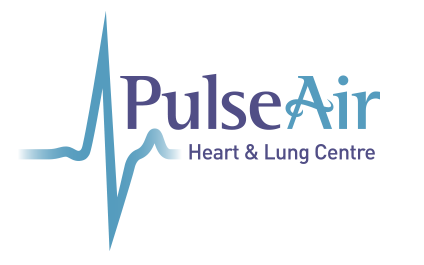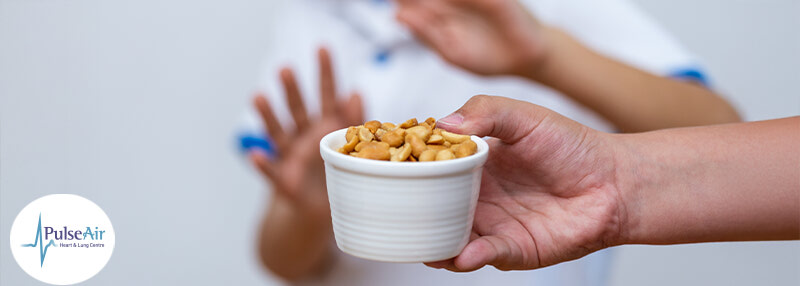Everything Parents Should Know About Signs, Testing, and Managing Allergies
Food allergies in children are more common than ever before. As a parent or caregiver, navigating the world of ingredient lists, lunchboxes, and allergic reactions can be overwhelming — especially if your child hasn’t been officially diagnosed.
At PulseAir Heart and Lung Centre, we work with families across Canada to identify and manage food allergies, respiratory conditions, and allergy-triggered sleep or breathing problems. Whether you suspect your child may have a food allergy or have already received a diagnosis, this guide can help you feel more informed and confident in your next steps.
What Is a Food Allergy? (And How Is It Different from an Intolerance?)
A food allergy happens when the immune system reacts to a specific protein found in food as if it were harmful. Even small amounts of the allergen can cause a reaction, which may range from mild to severe.
It’s different from a food intolerance, which may cause discomfort (like bloating or gas) but does not involve the immune system or lead to life-threatening symptoms.
Why this matters: Even mild allergic reactions can quickly become serious, especially in young children. Understanding the difference is key to protecting your child’s health.
Top 8 Food Allergies in Canadian Children
While children can be allergic to nearly any food, these eight allergens are responsible for the majority of serious reactions:
- Peanuts
- Tree nuts (e.g., walnuts, almonds, cashews)
- Milk
- Eggs
- Soy
- Wheat
- Fish
- Shellfish
Some allergies — like milk or egg — are commonly outgrown. Others, such as peanut or shellfish allergies, tend to be lifelong. That’s why timely diagnosis and monitoring are so important.
Signs and Symptoms to Watch For
Allergic reactions in children can look very different depending on the severity and the food involved. It’s important to recognize the signs — especially if your child is too young to describe their symptoms clearly.
Mild to Moderate Symptoms
- Hives or red, itchy skin
- Stomach pain or nausea
- Sneezing, runny nose, or watery eyes
- Itchy throat or mouth
- Mild coughing
Severe Symptoms (Anaphylaxis)
- Swelling of the face, lips, tongue, or throat
- Difficulty breathing or wheezing
- Dizziness or fainting
- Vomiting or diarrhea after eating
- Blueish skin tone, especially around lips or fingertips
If your child shows signs of anaphylaxis, call 911 immediately and use an epinephrine auto-injector if available.
When Should You Consider Allergy Testing?
Allergy testing can help confirm or rule out a suspected food allergy — and give you clarity and peace of mind.
You may want to consider testing if your child:
- Experiences repeated symptoms after meals or snacks
- Has a family history of food allergies, asthma, or eczema
- Avoids certain foods without a formal diagnosis
- Has recurring skin rashes, coughing, or nasal congestion
- Shows worsening symptoms during specific seasons (which may indicate environmental allergens as well)
Testing is especially helpful for children with other health conditions like asthma or sleep apnea, as food allergies can contribute to inflammation and breathing difficulties.
What to Expect from Allergy Testing at PulseAir
At PulseAir Heart and Lung Centre, we offer a family-focused, comfortable environment where children can be assessed for food and environmental allergies.
Here’s what the process looks like:
1. Consultation and History
We begin with a conversation about your child’s health, symptoms, family history, and lifestyle.
2. Testing Options
Depending on your child’s needs, we may use:
- Skin prick testing: Small amounts of allergens are placed on the skin to check for a reaction.
- Blood testing: May be recommended if your child has sensitive skin or a history of severe reactions.
3. Review and Results
We’ll walk you through the results and explain:
- What your child is allergic to (if anything)
- How severe the allergy is
- What steps to take next
4. Care Plan
We create a personalized allergy care plan, which may include:
- Allergen avoidance strategies
- Emergency response plans (including how to use an epinephrine injector)
- Recommendations for respiratory or sleep assessments, if needed
- Suggestions for allergy-friendly medical equipment or home solutions
Managing Food Allergies at Home and School
Once you have a diagnosis, everyday life may require a few changes — but it doesn’t have to be scary. Many families live confidently and safely with food allergies by making some simple adjustments.
Here are some tips to help keep your child safe and healthy:
Label Reading Is Key
- Always check food packaging for allergen warnings
- Look for “may contain” or “produced in a facility with…” labels
- Educate older children to read labels themselves
Create an Allergy-Friendly Meal Routine
- Prepare school lunches and snacks at home
- Use allergen substitutes for common ingredients (e.g., oat milk, egg replacers)
- Keep a list of safe and unsafe foods visible in your kitchen
Talk to Teachers and Caregivers
- Provide written instructions for allergen avoidance
- Share an emergency allergy action plan
- Make sure an epinephrine auto-injector is easily accessible if prescribed
Empower Your Child
- Teach them how to speak up about their allergy
- Practice what to say if they’re offered food
- Build their confidence in safe decision-making
How PulseAir Supports Families and Children with Allergies
At PulseAir, we understand that managing food allergies is about more than diagnosis—it’s about helping your whole family feel supported and informed.
Our team offers:
- Allergy testing for food and environmental triggers
- Respiratory care for children with asthma, allergy-related breathing issues, or chronic cough
- Sleep support for children with nighttime symptoms linked to inflammation or congestion
- Medical equipment guidance, including nebulizers, air purifiers, and allergy-friendly sleep solutions
Whether your child is newly diagnosed or has been managing allergies for years, we’re here to help you navigate the journey with confidence.
You’re Not Alone — Let PulseAir Help
Food allergies can feel overwhelming at first — but with the right testing, support, and tools, your child can thrive. At PulseAir Heart and Lung Centre, we’re proud to help Canadian families breathe easier, sleep better, and manage food allergies with confidence.
If you suspect your child may have a food allergy, or if you want a clear and personalized care plan, reach out to our team today to schedule an allergy assessment.


